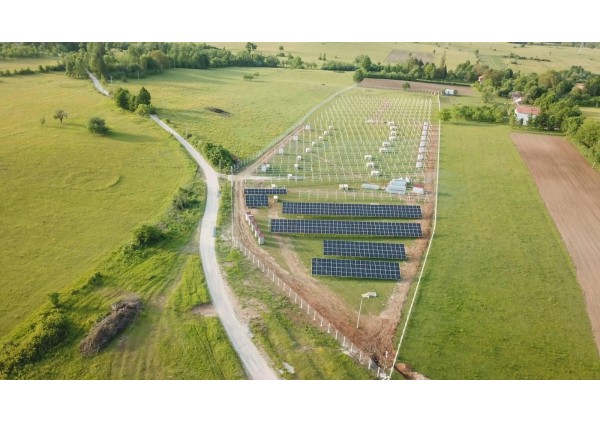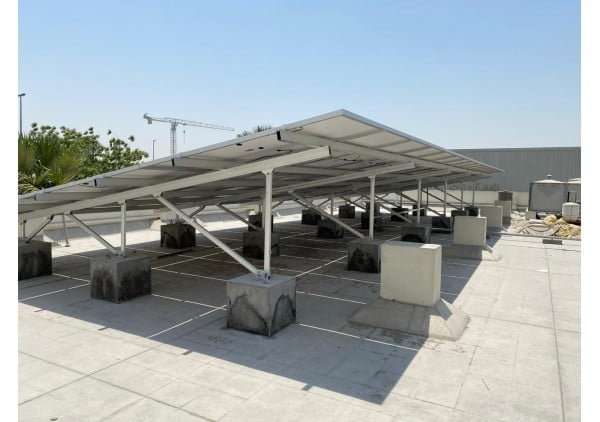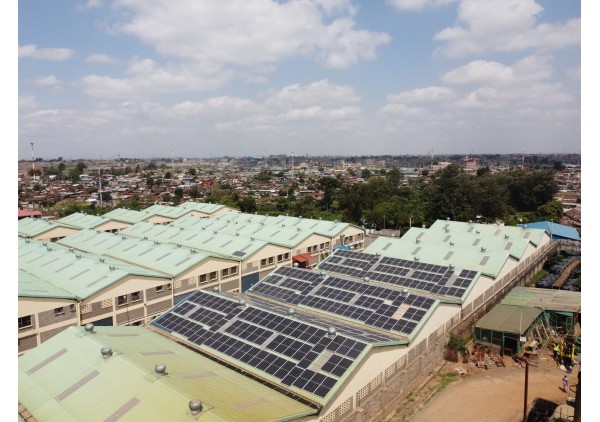2021
1.6MW X Peru Oct 2021
In October 2021, Peru achieved a significant milestone in its renewable energy journey with the completion of a 1.6MW solar project. This large-scale installation marks a key development in Peru's solar power sector, showcasing the country's commitment to harnessing solar energy for sustainable development. In this blog post, we'll explore the details of this impressive project, the installation process, the benefits of large-scale solar energy, and valuable insights into Peru's photovoltaic system. Join us as we delve into this notable case study and its impact on Peru's energy landscape.
Project Overview
1.6MW Solar Project in Peru
The 1.6MW solar project, completed in October 2021, represents a major advancement in Peru's solar energy sector. This ground-mounted system was designed to maximize energy production and efficiency, leveraging Peru's abundant sunlight to generate clean, renewable energy.
Key Components
1.6MW Ground Mount System: The project features a 1.6MW ground-mounted solar array, which is essential for maximizing energy capture and efficiency. Ground mount systems are ideal for large-scale solar installations, providing ample space for solar panels and optimizing their exposure to sunlight.
Photovoltaic System: The project utilizes a state-of-the-art photovoltaic system, including high-efficiency solar panels, inverters, and a sophisticated monitoring system. This system ensures optimal performance and energy output, contributing significantly to Peru's renewable energy goals.
Solar Installation Tips
Successfully installing a large-scale solar project requires careful planning and execution. Here are some valuable tips for solar installations, inspired by the 1.6MW project in Peru:
1. Site Assessment and Preparation
Conduct a thorough site assessment to determine the best location for the ground-mounted solar array. Consider factors such as land topography, sunlight exposure, and potential shading. Proper site preparation is crucial for ensuring the system's long-term performance.
2. Quality Equipment
Invest in high-quality solar panels, inverters, and mounting systems. The 1.6MW project utilized advanced photovoltaic components to ensure maximum efficiency and durability.
3. Professional Installation
Engage a skilled and experienced installation team. Professional installers are essential for ensuring that the system is set up correctly, aligned properly, and connected efficiently.
4. Monitoring and Maintenance
Implement a robust monitoring system to track the performance of the solar array. Regular maintenance and timely repairs are essential to keep the system operating at peak efficiency.
5. Compliance with Local Regulations
Ensure that the installation meets all local regulations and standards. Compliance not only ensures safety but also helps in accessing potential incentives and rebates.
Benefits of Large-Scale Solar Energy in Peru
Environmental Impact
The 1.6MW solar project significantly reduces carbon emissions, contributing to global efforts to combat climate change. By harnessing solar power, the project minimizes reliance on fossil fuels and promotes sustainable energy practices in Peru.
Economic Advantages
Large-scale solar projects create jobs and stimulate economic growth. The 1.6MW project generated employment opportunities and supported the development of the renewable energy sector in Peru.
Energy Independence
Investing in solar energy enhances energy independence. With its abundant sunlight, Peru can reduce its dependence on imported energy sources and move towards greater energy self-sufficiency.
Case Study: 1.6MW Solar Project
Project Planning and Execution
The planning phase of the 1.6MW solar project involved detailed collaboration between local authorities, engineers, and solar energy experts. Extensive site assessments and feasibility studies were conducted to ensure the project's success.
Installation Process
The installation process for the 1.6MW ground-mounted system was meticulously carried out, adhering to best practices for large-scale solar projects. The system was installed to maximize energy capture and efficiency, ensuring optimal performance.
Performance and Monitoring
Since its completion in October 2021, the 1.6MW solar project has consistently delivered high energy output. The advanced monitoring system allows for real-time performance analysis and ensures timely maintenance.
Conclusion
The 1.6MW solar project in Peru, completed in October 2021, exemplifies the significant strides being made in solar energy. By utilizing a 1.6MW ground-mounted system and advanced photovoltaic technology, the project demonstrates the benefits of large-scale solar energy in terms of environmental impact, economic growth, and energy independence. As Peru continues to invest in solar power, projects like this pave the way for a more sustainable and prosperous future.
FAQs
Q1: What are the key components of the 1.6MW solar project in Peru?A1: The key components include a 1.6MW ground-mounted solar array, high-efficiency photovoltaic panels, inverters, and a sophisticated monitoring system.
Q2: Why is a ground-mounted system used in large-scale solar projects?A2: Ground-mounted systems are ideal for large-scale solar projects because they provide ample space for solar panels and optimize their exposure to sunlight, maximizing energy capture and efficiency.
Q3: What benefits does large-scale solar energy bring to Peru?A3: Large-scale solar energy reduces carbon emissions, creates jobs, stimulates economic growth, and enhances energy independence by reducing reliance on imported energy sources.
Q4: How can a robust monitoring system improve solar project performance?A4: A robust monitoring system allows for real-time performance tracking, enabling prompt maintenance and continuous optimization of the solar array to ensure peak efficiency.
Q5: What are some essential tips for successful solar installations?A5: Essential tips include conducting a thorough site assessment, investing in high-quality equipment, engaging professional installers, implementing a robust monitoring system, and ensuring compliance with local regulations.
1MW X Kenya March 2021
In March 2021, Kenya marked a significant milestone in its renewable energy journey with the successful completion of a 1MW solar project. This notable installation highlights Kenya's commitment to expanding its solar energy capabilities and underscores the growing potential of photovoltaic systems in the region. In this blog post, we will explore the details of this 1MW project, including the installation process, the benefits of solar energy in Kenya, and key insights from the project analysis. Join us as we delve into this important case study and its impact on Kenya's energy landscape.
Project Overview
1MW Solar Project in Kenya
The 1MW solar project, completed in March 2021, represents a major advancement in Kenya's solar energy sector. This flat-roof installation was designed to leverage Kenya's abundant sunlight and maximize energy efficiency, contributing significantly to the country’s renewable energy goals.
Key Components
1MW L-Feet Flat Roof Commercial Install: The project utilized 1MW L-Feet roof mounts, which are specifically designed for flat-roof installations. These mounts provide the necessary support and stability for solar panels, ensuring they are securely fastened and optimally positioned for maximum sunlight exposure.
Photovoltaic System: Central to the project is an advanced photovoltaic system that includes high-efficiency solar panels, inverters, and a sophisticated monitoring system. This setup ensures reliable performance, efficient energy conversion, and real-time performance tracking.
Solar Installation Tips
Successfully installing a 1MW solar project requires meticulous planning and execution. Here are some valuable tips for solar installations, inspired by the 1MW project in Kenya:
1. Detailed Site Assessment
Conduct a thorough site assessment to identify the best location for the flat-roof solar array. Consider factors such as roof structural integrity, sunlight exposure, and potential shading from nearby structures.
2. High-Quality Components
Use high-quality solar panels, inverters, and mounting systems. The 1MW L-Feet roof mounts were critical in this project for ensuring stability and optimizing panel alignment.
3. Professional Installation Team
Engage a skilled and experienced installation team. Proper training and expertise are essential to ensure that the system is installed correctly and operates efficiently.
4. Comprehensive Monitoring
Implement a robust monitoring system to track the performance of the photovoltaic system. This allows for real-time data analysis and timely maintenance to address any issues.
5. Adherence to Local Standards
Ensure that the installation complies with local regulations and standards. This not only ensures safety but also helps in accessing potential incentives and rebates.
Benefits of Solar Energy in Kenya
Environmental Impact
The 1MW solar project significantly reduces carbon emissions, contributing to Kenya's efforts to combat climate change. By harnessing solar energy, the project decreases reliance on fossil fuels and promotes sustainable energy practices.
Economic Growth
Large-scale solar projects create jobs and stimulate economic growth. The 1MW project in Kenya generated employment opportunities and supported the growth of the renewable energy sector.
Energy Independence
Investing in solar energy enhances energy independence. With its ample sunlight, Kenya can reduce its reliance on imported energy sources and move towards greater energy self-sufficiency.
Case Study: 1MW Solar Project
Project Planning and Execution
The planning phase of the 1MW solar project involved detailed coordination between local authorities, engineers, and solar energy experts. Extensive site assessments and feasibility studies were conducted to ensure the project's success.
Installation Process
The installation process for the 1MW flat-roof system was executed with precision. The 1MW L-Feet roof mounts were securely attached to the commercial rooftop, ensuring stability and optimal positioning of the solar panels. Skilled technicians handled the photovoltaic system installation, ensuring efficient connectivity and alignment.
Performance and Monitoring
Since its completion in March 2021, the 1MW solar project has consistently delivered high energy output. The advanced monitoring system provides real-time performance data, allowing for ongoing analysis and maintenance.
Conclusion
The 1MW solar project in Kenya, completed in March 2021, exemplifies the progress being made in solar energy. By utilizing 1MW L-Feet flat roof mounts and advanced photovoltaic technology, the project highlights the benefits of large-scale solar installations in terms of environmental impact, economic growth, and energy independence. As Kenya continues to invest in solar power, projects like this pave the way for a more sustainable and prosperous future.
FAQs
Q1: What are the key components of the 1MW solar project in Kenya?A1: The key components include 1MW L-Feet flat roof mounts, a state-of-the-art photovoltaic system, high-efficiency solar panels, inverters, and a sophisticated monitoring system.
Q2: Why are 1MW L-Feet roof mounts important for flat-roof installations?A2: 1MW L-Feet roof mounts provide stability and proper alignment for solar panels on flat roofs, ensuring they are securely fastened and optimally positioned for maximum sunlight exposure.
Q3: What benefits does solar energy bring to Kenya?A3: Solar energy reduces carbon emissions, creates jobs, stimulates economic growth, and enhances energy independence by reducing reliance on imported energy sources.
Q4: How can a robust monitoring system improve solar project performance?A4: A robust monitoring system allows for real-time performance tracking, enabling prompt maintenance and continuous optimization of the solar array to ensure peak efficiency.
Q5: What are some essential tips for successful solar installations?A5: Essential tips include conducting a detailed site assessment, using high-quality components, engaging a skilled installation team, implementing a comprehensive monitoring system, and adhering to local regulations and standards.














